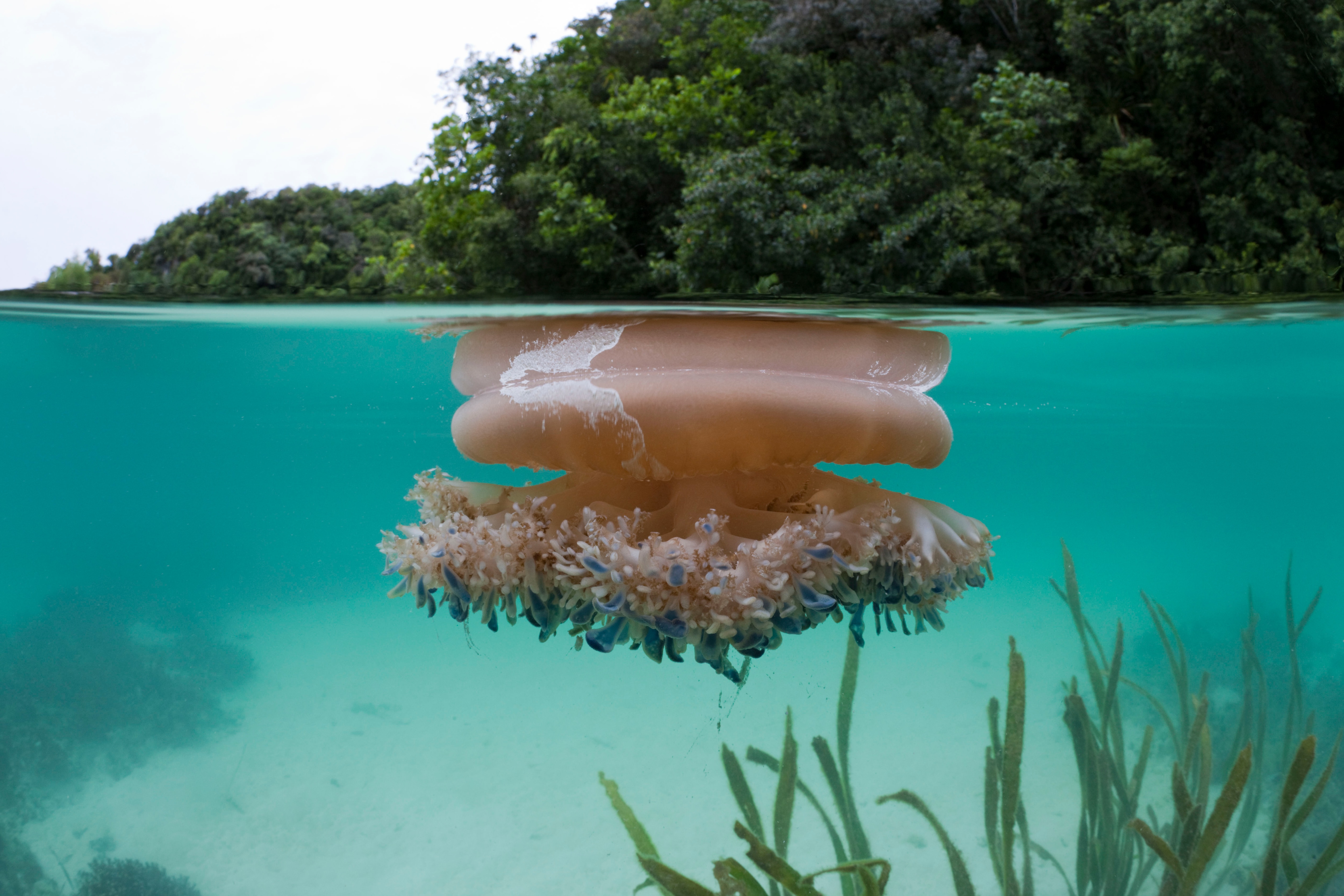Create a free profile to get unlimited access to exclusive videos, sweepstakes, and more!
Take cover! Jellyfish hurling venom-filled mucus ‘grenades’ can sting without touching

Like the world isn’t a scary enough place these days as is, now we have to contend with jellyfish hurling venomous mucus “grenades.”
As much as we’d love to take credit for that description, we can actually thank scientists with an obvious flair for explosive language. That’s the descriptor used in a study published in Nature Communications Biology, led by scientists at the Smithsonian, the University of Kansas, and the U.S. Naval Research Laboratory, which documents these “grenades” as tiny, venomous, stinging structures swimming autonomously within the mucus secreted by upside-down Cassiopea jellyfish. Unfortunately, “grenades” isn’t the scientific term they’re going with, but rather "cassiosomes."
Where usually you’d be wary of a jellyfish’s tentacles, upside-down jellyfish don’t possess such regalia. So they have to make do with what they’ve got, and apparently they’ve got a lot of violent mucus. But instead of seeking out some Robitussin, these jellyfish just hawk a proverbial loogie, filling the water with their prey-killing sting. And their prey aren’t the only ones suffering — divers who experience “stinging water” can also blame cassiosomes.
Though the upside-down jellyfish have been studied for over a century now, scientists haven’t been able to figure out why exactly they were secreting clouds of mucus. Until the team used a scientific cocktail of “histology, microscopy, microfluidics, videography, molecular biology, and mass spectrometry-based proteomics” to examine the stinging-cell structures within the mucus.
“They were autonomous, moving around like little Roomba vacuums and bumping into the brine shrimp that we fed them, just killing them on contact, and moving on to the next," said Cheryl Ames, a marine biologist at the Smithsonian National Museum of Natural History and a co-lead author of the study, per National Geographic.
You can get an idea of the effectiveness of these mucus grenades in the video below, which shows a brine shrimp minding its own business, enjoying a nice swim, until it runs into one of these killer mucus grenades.
So yeah, keep your eyes peeled for mucus floating around in the water. And there needn’t even be an upside-down jellyfish nearby, as these cassiosomes can live and "hunt" for up to 10 days on their own.
Though scientists are unsure how this occurs, they did find algae, a symbiont for Cassiopea jellyfish, within the cassiosomes. So the suspicion is that the algae may act like a solar-powered battery pack.
It’s also not known if these grenades are purposefully hunting, so to speak. “I don’t know if they can seek,” said Anna Klompen, a Ph.D. candidate at the University of Kansas and a co-lead author on the study, “but they can definitely destroy.”
(via National Geographic)


























